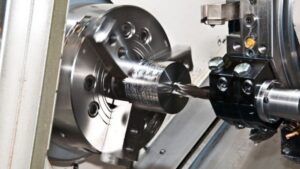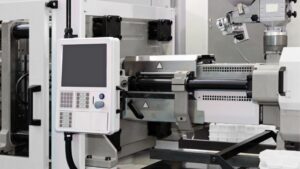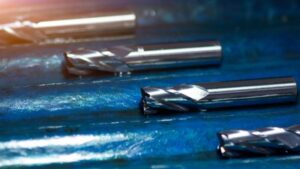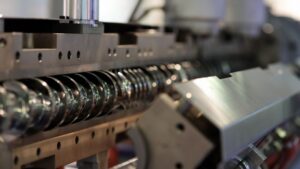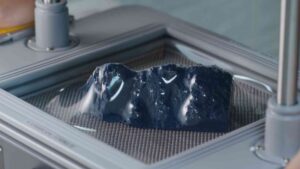There have been too many arguments about the best ways to prevent jetting during injection molding. The jetting is caused by many factors, and when it happens, the molten plastic fails to stick to the mold. We understand why many manufacturing companies want to lower the occurrence. It helps them to save resources.
While some people argue that it is best to increase the injection rate to prevent jetting, others have a different claim. If you can ensure that all the parameters that enhance the best outcomes are in place, you should have no worries about jetting during injection molding. In fact, the real solution to avoiding injection mold jetting is that you must study each situation independently. There are several factors to be considered.
Mass production is lucrative
The need to study injection molding and address issues such as jetting is apparent after considering the effect on companies. These manufacturers can gain significant profits when every aspect of the mass production line works. However, one small error can cause jetting.
Consequently, the company suffers enormous losses. In such cases, it is difficult to recover from such losses. That is why these companies hire experts who understand why jetting happens during injection molding and how to stop it.
The losses that occur during mass production have an impact on the overall profits. That is why companies pay for the best quality products and hire professionals to manage their production lines.
Therefore, knowing how to avoid jetting injection molding errors is one thing. But you must also have an expert who can apply the practical skills needed to solve the problem.
We have identified one of the first ways to prevent jetting and get better injection molding results, hiring experts.
Advantages of hiring experts to prevent injection mold jetting
The experts who have sufficient experience know what they need to do immediately. If you can monitor the events, you will observe that your expert only needs to ask a few questions and study the production process. That is all they need to get essential information about the reasons why your manufacturing team keeps experiencing jetting during injection molding. Here are the advantages of hiring experts;
High-level experience
The experts leverage experience to identify aspects of the production line that may have been elusive to your team. They see reasons why certain parts of the production line fail. These experts are trained to identify these errors that can cause huge losses. So you are paying for their experience to ensure your team stops experiencing jetting.
Quality assurance
Another reason you should get the experts involved is to maintain a high level of quality assurance. This is the best standard in the production line. Your focus should be monitoring every aspect of the manufacturing process, best handled by the professionals trained for the job.
Successfully introducing new products
After engaging the services of trained experts to help your team prevent jetting injection molding. That is the best time to introduce new plastic products to capture a larger market.
Other ways to avoid jetting injection molding
Here are other crucial tips you can apply to prevent jetting while injecting molten plastic into a mold;
Adjust the temperature
Jetting during injection molding is bound to happen if the temperature of the molten plastic is not adequate. That is why the plastic in its volatile form fails to stay in the mold. If jetting keeps happening, one of your first approaches to troubleshooting the issue should be checking the temperature.
It is best to inject molten plastic that has a high temperature. In other words, the molten plastic must be very hot. You should also ensure that the mold is hot, almost at the same temperature as the plastic. If you can get this right, then you have a big solution to jetting.
This is what happens when you maintain a high temperature during injection molding. The plastic remains hot, which is essential to allow it to hold after pouring into the mold. The heated mold also keeps the temperature of molten plastic high. That is it. If the temperature of the plastic falls, it will not hold on to the mold.
Allow the plastic to be completely cured in the mold
If you have been maintaining the molten plastic temperature and the mold but still experience jetting, then try this solution. It is possible that the plastic is not curing correctly in the mold. This can be a huge problem causing massive losses in resources and revenue. Molten plastic must be allowed to cure in the mold before it is moved.
That means you should check the cooling time allocated for the process. If it is in order, then your cooling system may be faulty. And a defective cooling system can cause sinks which are defects in the plastic that cause jetting.
So, the solution is to ensure your plastic is wholly cured before attempting to move it.
The viscosity of your plastic is too high
Another cause of jetting in injection molding is highly viscous plastic. If this is the case, there will be an issue with keeping the air trapped to allow proper curing. A highly viscous plastic freely releases the air. To prevent this from happening, you should arrange with your project manager to source plastic with a lower viscosity.
Irregular cooling
If the molten plastic cools irregularly, some parts will become solid before other parts, which is a problem. You can see that the entire process is complex, needing higher expertise.
To prevent uneven cooling, you should explore ways to increase the injection speed. This allows the molten plastic to enter the mold faster, and the entire batch cools at the same rate. Also, this is an excellent way to prevent those defective weld lines.
To conclude, you can get better results by avoiding injection mold jetting. It is mainly about monitoring the temperature, injection speed, and cooling system.
